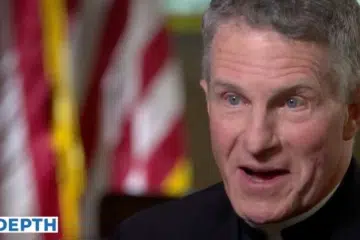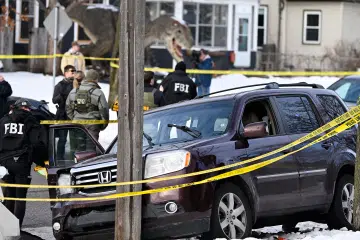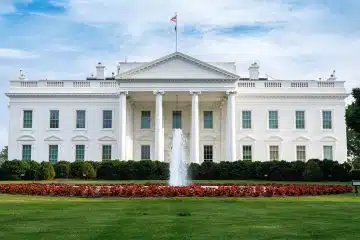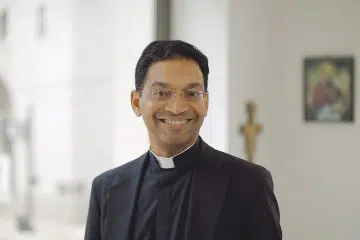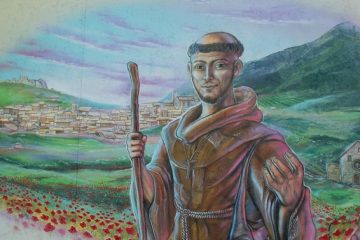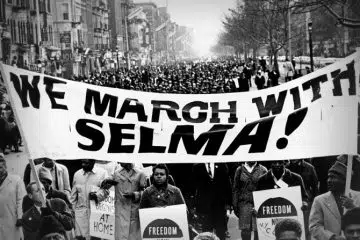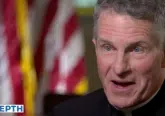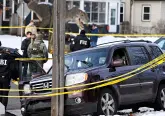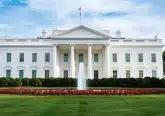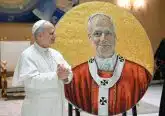Even as immigration reform stalls, Catholics champion welcoming message

IMAGE: CNS/Alex Brandon
By Rhina Guidos
WASHINGTON (CNS) — On the Aug. 6 feast of the Transfiguration of the Lord, Auxiliary Bishop Mario E. Dorsonville of Washington addressed a crowd of largely Salvadoran immigrants at the Basilica of the National Shrine of the Immaculate Conception.
They were there to mark the feast that is the main national holiday in the predominantly Catholic country of El Salvador, whose name in Spanish means “the savior,” referring to Jesus Christ. Many of them arrived in the U.S. in the 1980s during the country’s civil war and some more recently because of the violent situation in the region.
Bishop Dorsonville told the crowd that when he was censing the image depicting the transfiguration of Christ, an image revered by Catholic Salvadorans, he noticed the statue’s arms spread out in a welcoming pose. He used the image to address immigration.
“It gave me joy to see the open arms,” Bishop Dorsonville said of the statue. “A person who closes his arms is not a Christian. A person who closes doors cannot be a Christian. A person who is indifferent to the tragedies of the world is not a Christian.”
Like many in the church, as well as the pope and other U.S. bishops, Bishop Dorsonville called for “welcoming the stranger.” In the document, “Forming Consciences for Faithful Citizenship,” the U.S. bishops say that the Gospel mandate to welcome the stranger “requires Catholics to care for and stand with newcomers, authorized and unauthorized, including unaccompanied immigrant children, refugees and asylum-seekers, those unnecessarily detained, and victims of human trafficking.”
With weeks to go before the end of election season that has seen politicians and others bring out critical and unfavorable language toward immigrants and migrants, Catholics report some of the highest percentages of churchgoers hearing about immigration from the pulpit and hearing about the need to welcome and support them.
An Aug. 8 Pew Research Center survey showed that 41 percent of Catholics say they have heard about immigration at Mass, the highest of percentage of churchgoers who said they heard about immigration in the survey conducted in June and July. And of those, 32 percent said they heard about the need to welcome and support immigrants, also the highest percent of churchgoers (higher than Protestants, evangelicals and other Christians) reporting that they heard at church the message of being more welcoming toward immigrants.
Christopher G. Kerr, executive director of Ignatian Solidarity Network, a national social justice education and advocacy organization based in Ohio, said the pope’s 2015 apostolic visit to the U.S. “raised the profile of immigrants and the immigration issue in the U.S. by bringing greater attention to the plight of the immigrant/migrant.”
The pope called “attention to the truths of marginalization that exist in our world. He seeks to engage us in the realities of our brothers and sisters who are marginalized, to remind us of the presence of Christ within them,” Kerr said in an email interview with Catholic News Service.
He did so, Kerr said, when he stopped his car along a motorcade route to accept the note of a 5-year-old telling him she didn’t want her parents deported.
“The story of her parents’ undocumented status captured the country’s attention,” said Sara Benitez, director of the Latino outreach program for Washington’s Faith in Public Life. “When Pope Francis visited the United States, his words and actions shifted the debate on immigration from policy to people.”
It changed the conversation, Benitez said.
“As Americans, we are a lot like Thomas — we have to touch the wounds to believe — as a nation we don’t usually trust someone until we come to know them,” Kerr said. “Pope Francis’ emphasis on the immigrant story is one way that people were invited into knowing immigrants and coming to see their struggles as our own and our country’s.”
And how did Catholics respond?
“I think we saw a strong Catholic voice in support of refugees and immigrants over the course of the past year — both clerical and lay,” Kerr said. “I think this was particularly true around the Syrian refugee crisis, but also in terms of outreach and concern for immigrants in the U.S, including people who are undocumented.
“We have seen lots of examples of parishes working to organize legal assistance and direct service assistance to migrants, migrant communities, unaccompanied children migrants, etc. We also saw a significant interest by young people in engaging in the immigration issue on Catholic campuses.”
But Congress and policy is another story.
“In terms of Congress and the election — one could say that there was no impact because comprehensive legislation has not been passed,” Kerr said.
Benitez, whose organization advocates for immigration policy, said he has seen people respond by wanting to know more about immigrants, “by seeing their faces, listening to their stories.” And this, in turn, has strengthened the resolve of immigration advocates to keep pushing for reform, she said.
“At Faith in Public Life, we were inspired and challenged by Pope Francis’ visit to continue lifting up his example and message of Catholic teaching to welcome immigrants,” she said.
Bishop Dorsonville, in his homily during the feast of the Transfiguration, reminded those gathered of the contribution of the many immigrants to the country. He went on to invoke Salvadoran Archbishop Oscar Romero, who was assassinated in 1980 for speaking out against violence and standing up for the poor — and anyone who was “voiceless.”
“I’m sure if our dear Blessed Romero lived in the United States today, his gaze would turn to the immigrant in this precise moment, a very complicated and difficult moment in the history of a nation that has been built by immigrants,” Bishop Dorsonville said. “Our voice has to join the voice of the voiceless” and the faces of those no one wants to see.
The worst human tragedy that can befall on a person is to become invisible to society, said Bishop Dorsonville.
“Let’s ask our Blessed Romero today, that by his intercession, he place at the feet of the transfigured Christ our intentions for the millions and millions of ‘invisible’ people who work and build the economy of our nation,” he said.
– – –
Follow Guidos on Twitter: @CNS_Rhina.
– – –
Copyright © 2016 Catholic News Service/U.S. Conference of Catholic Bishops. www.catholicnews.com. All rights reserved. Republishing or redistributing of CNS content, including by framing or similar means without prior permission, is prohibited. You may link to stories on our public site. This copy is for your personal, non-commercial use only. To request permission for republishing or redistributing of CNS content, please contact permissions at [email protected].


